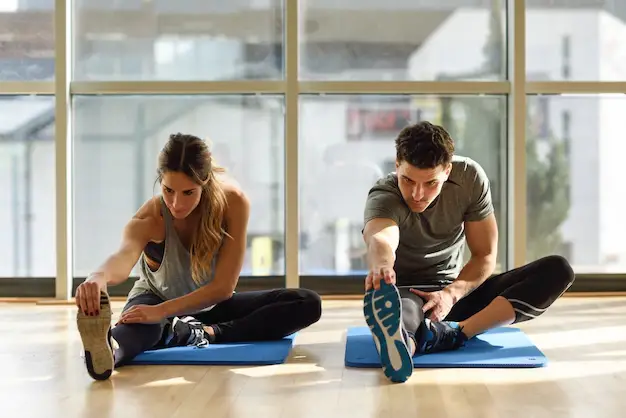Spondylolisthesis is a condition that affects many people worldwide and is related to the slipping of the vertebrae (bones in the spine). This can result in a range of symptoms that includes pain, stiffness, muscle spasms, and more.
In this article, we will discuss what the condition entails, and what happens if spondylolisthesis is left untreated.
What is Spondylolisthesis?
Spondylolisthesis is a condition in which one vertebra in the spine slips out of place and moves forward or backward relative to the vertebrae below it.
It is most commonly seen in the lumbar (lower) spine, but can also occur in the thoracic (upper) spine and the cervical (neck) spine. The most common cause of spondylolisthesis is a stress fracture in the vertebra, but it can also be caused by other factors such as degenerative changes in the spine, congenital abnormalities, or trauma.
Symptoms of spondylolisthesis can include lower back pain, muscle spasms, stiffness, and difficulty standing or walking for long periods of time.
What Happens If Spondylolisthesis Is Left Untreated?
If left untreated, spondylolisthesis can lead to a number of complications, including:
- Increased pain: The vertebra that is out of place can cause irritation and inflammation of the surrounding muscles and tissues, leading to increased pain.
- Nerve compression: The misaligned vertebrae can also put pressure on the nerves running through the spine, leading to symptoms such as numbness, tingling, and weakness in the affected areas.
- Degenerative changes: If left untreated, spondylolisthesis can lead to degenerative changes in the spine, such as osteoarthritis.
- Decreased mobility: The pain and discomfort associated with spondylolisthesis can make it difficult to move around and perform everyday activities, leading to decreased mobility.
It’s important to see a doctor if you are experiencing symptoms of spondylolisthesis, as early treatment can help prevent these complications.

Can Spondylolisthesis be cured?
There is no specific cure for spondylolisthesis, but treatment can help alleviate symptoms and prevent the condition from progressing. The most appropriate treatment will depend on the severity of the condition, as well as the specific symptoms and underlying cause.
Possible treatments for spondylolisthesis include:
- Physical therapy: Physical therapy can help strengthen the muscles in the back and improve flexibility, which can help reduce pain and improve mobility.
- Medications: Nonsteroidal anti-inflammatory drugs (NSAIDs) or muscle relaxants may be prescribed to reduce pain and inflammation.
- Bracing: A back brace may be recommended to help stabilize the spine and reduce the risk of further injury.
- Surgery: In cases where the condition is severe or other treatments are not effective, surgery may be recommended. There are several different types of surgery that can be used to treat spondylolisthesis, including spinal fusion and laminectomy.
It’s important to work closely with a medical professional to determine the best course of treatment for your specific condition.
Exercises to help with Spondylolisthesis
Exercise can be an important part of spondylolisthesis treatment, as it can help strengthen the muscles in the back and improve flexibility, which can help reduce pain and improve mobility.
However, it is advised to speak to your healthcare provider or physical therapist before starting any new exercise program, as certain types of exercise may not be appropriate for everyone with spondylolisthesis. They can help you determine the best exercises for your specific condition and fitness level.
Here are some exercises that may be beneficial for people with spondylolisthesis:
- Stretching: Stretching exercises can help improve flexibility in the muscles of the back and hips, which can help reduce pain and improve mobility.
- Strengthening: Strengthening exercises can help improve the stability of the spine and reduce the risk of further injury. Some examples of strengthening exercises include planks, bird dogs, and bridges.
- Aerobic exercise: Aerobic exercise can help improve cardiovascular fitness and overall health. Low-impact activities such as swimming or cycling may be particularly beneficial for people with spondylolisthesis.
- Yoga: Some yoga poses may be helpful for people with spondylolisthesis, as they can help improve flexibility and strength in the back and hips. However, it’s important to choose poses that are appropriate for your fitness level and to work with a qualified instructor.

Eating healthier to improve the condition of your back
There is no specific diet that has been proven to help with back problems, such as spondylolisthesis. However, eating a well-balanced diet that is rich in fruits, vegetables, and lean proteins can help support overall health and well-being, which may in turn help to manage the symptoms of back problems.
Here are some general tips for eating to support good back health:
- Eat a variety of foods: Aim to include a variety of fruits, vegetables, whole grains, lean proteins, and healthy fats in your diet.
- Stay hydrated: Drinking plenty of water can help keep the discs in your spine hydrated, which can help prevent back pain.
- Maintain a healthy weight: Excess weight can put additional strain on the spine, so it’s important to maintain a healthy weight to reduce the risk of back problems.
- Avoid or limit foods that may contribute to inflammation: Some foods, such as processed foods, sugary drinks, and foods high in saturated and trans fats, may contribute to inflammation in the body. Limiting your intake of these foods may help reduce inflammation and manage back pain.
It’s important to keep in mind that everyone is different and what works for one person may not work for another. If you have a specific back condition then perhaps consult with a registered dietitian about what dietary changes may be appropriate for you.
Surgery for Spondylolisthesis
Surgery may be recommended for people with spondylolisthesis if non-surgical treatments, such as physical therapy and medications, are not effective in relieving symptoms. The specific type of surgery will depend on the severity of the condition and the specific symptoms being experienced.
It is always important to discuss the potential benefits and risks of surgery before committing to any procedure.
Surgeries can include laminectomies, decompression surgery, spinal fusion, or modern spinal implants such as a TOPS system from Premia Spine.


